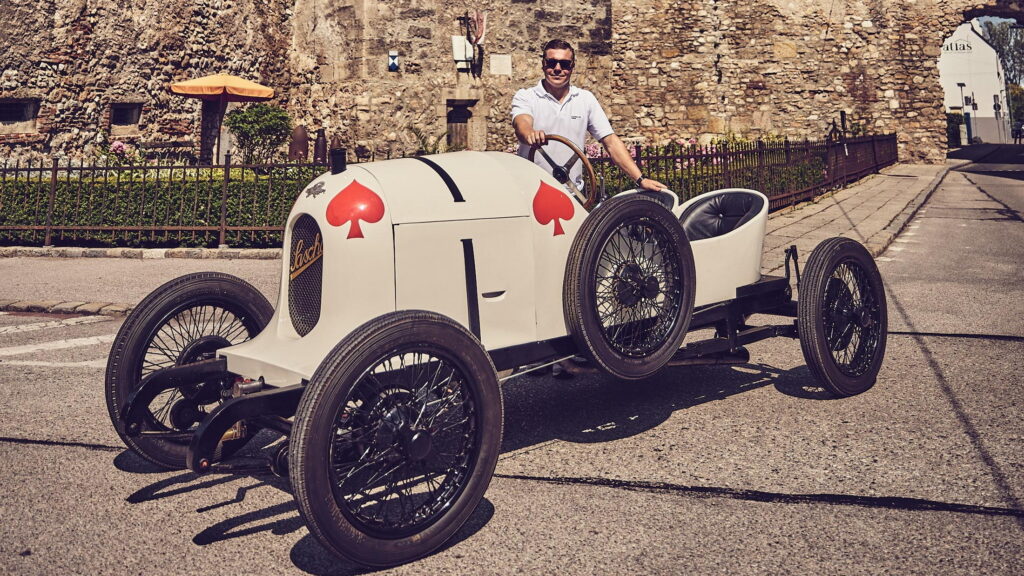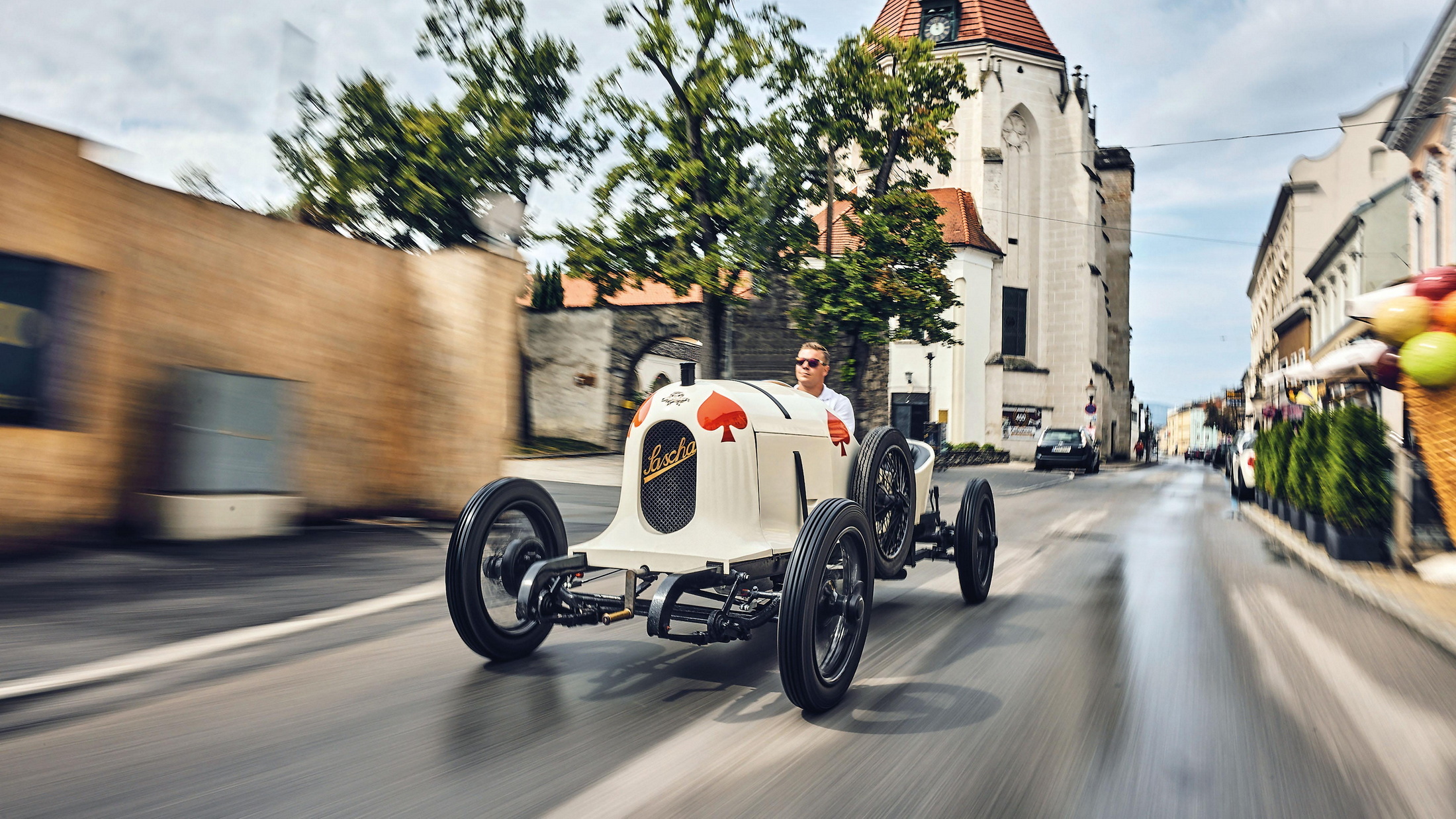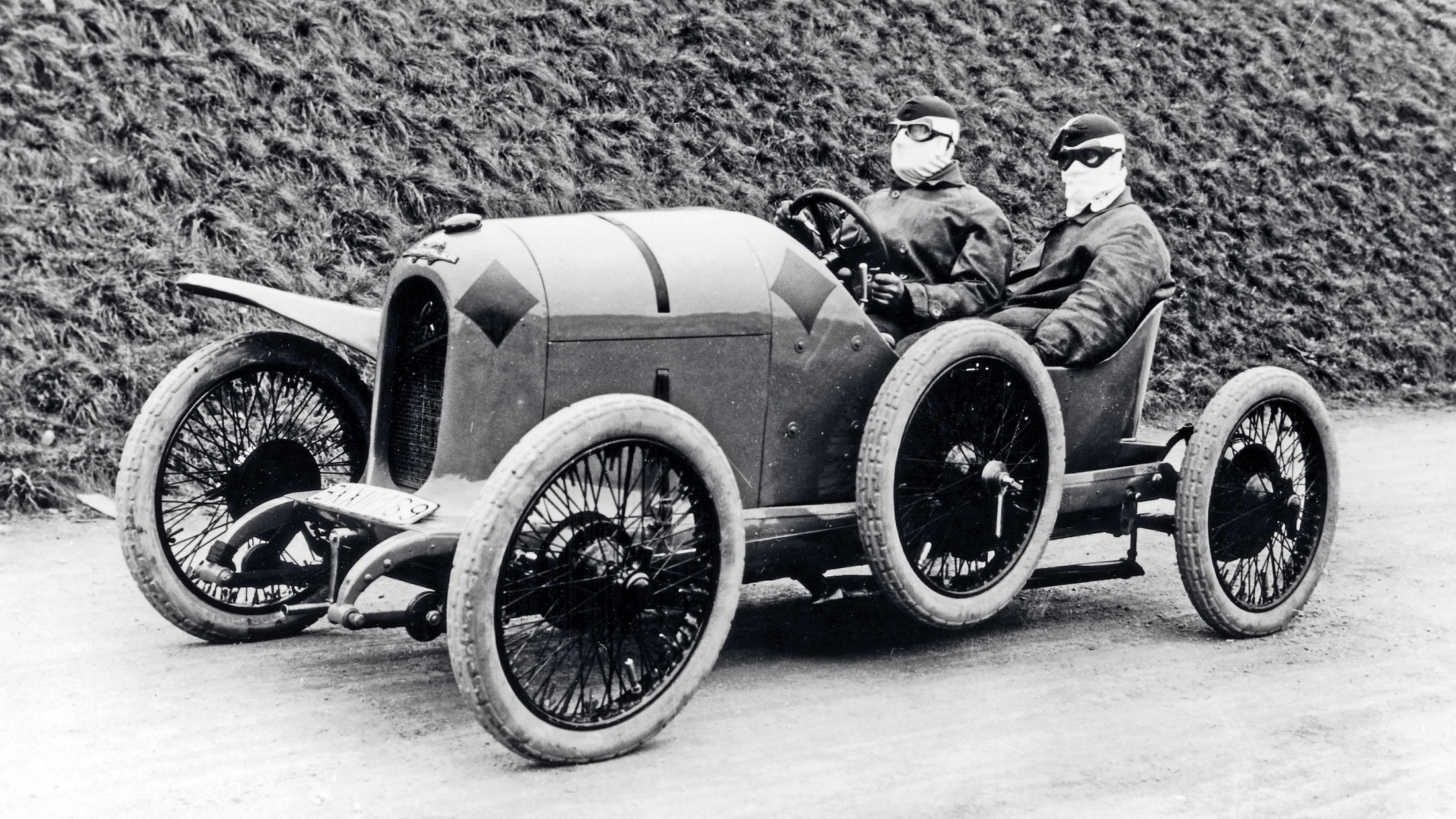Way back in the 1920s, before Ferdinand Porsche became fascinated by rear-engine vehicles and flat-fours, he was the managing director of Austro-Daimler, in Wiener Neustadt, Austria. One of the cars he created there, the ADS-R, shows that his need for speed, and his fascination with small, lightweight, affordable vehicles was there from the very beginning.
Porsche set out to prove that he could create a relatively modest car that could compete with the bigger, more powerful vehicles of the era. He shared his vision with motorsports fan Alexander Joseph Graf Kolowrat-Krakowsky, better known as Sascha. In order to sell the Austro-Daimler board on the idea, he funded the production of four racecars, called the ADS-R.
Because of the name on the grille, and to honor the man who funded the project, the cars are known as the Sascha. Today, one of those four original cars is the oldest drivable vehicle in the Porsche Museum’s collection of classics, and they decided to take it back to the streets of Wiener Neustadt to see what it was like to drive among the historic facades of the city in which it was conceived.
Read: The Oldest-Surviving Car Ferdinand Porsche Ever Worked On Is Now On Display At The Brand’s Museum
The car is powered by a 1,100 cc inline-four that revs up to 4,500 rpm, and makes 49 hp (37 kW/50 PS). That may not sound like a lot by today’s standards, but thanks to a curb weight of just 1,318 lbs (598 kg), it’s still pretty sprightly, according to Jan Heidak, who works at the Porsche Museum.
“It’s still a lot of fun. You can feel every vibration. Hear how the engine’s performing. There’s no power steering, so you need a lot of strength and sensitivity,” said Heidak. “Sascha was built for other road surfaces. We actually have too much grip, are too fast, and have high forces.”
In its own time, the Sascha was a rocket. Porsche and Kolowrat-Krakowsky took three to compete in the 1922 Targa Florio. The cars finished first and second in the 1.1-liter class, while the third had to drop out due to engine issues. A fourth car, equipped with a 1.5-liter engine, entered the open class, where it competed against cars that were as much as five times more powerful, and finished 19th overall.
The Italian media dubbed the Sascha the “revelation of the Targa Florio,” and over its lifetime, it competed in a total of 52 races, winning 22 of them. Sadly, despite the impressive haul of silverware, the board of Austro-Daimler decided against putting the ADS-R into production for financial reasons.
However, according to Heidak, seeing the car back home is like being in a time machine. Meanwhile, his boss, Kuno Werner, says that even though the Sascha precedes Porsche (the company) restoring it still provided some revelations for the museum’s team.
“When we first got started, I didn’t know much about Sascha,” said Werner. “For me, the company’s history begins later. But it’s interesting when you delve further into the company story and discover many things you’re already familiar with in other vehicles.”
Now that it has been fully restored, and there are members of staff who know how to keep it running, the Porsche Museum will be taking the Sascha to more events as a symbol of the company’s roots.





















